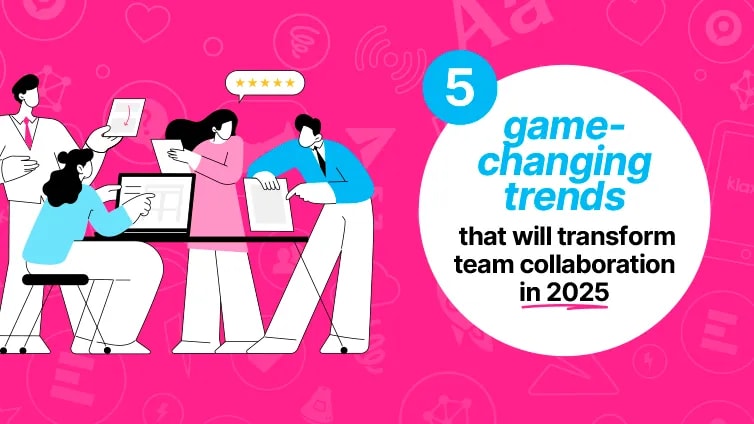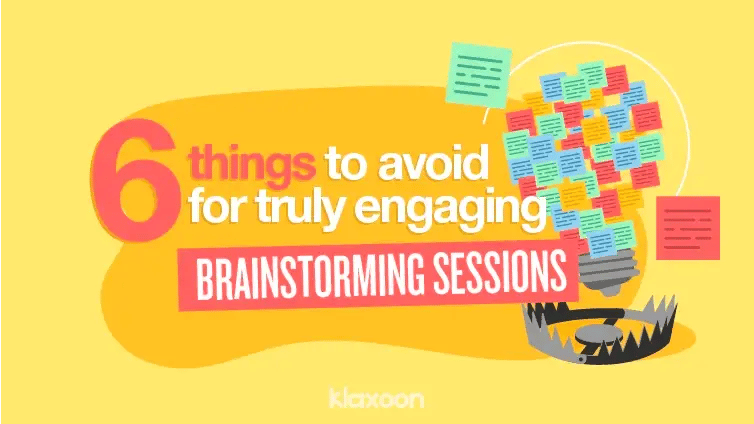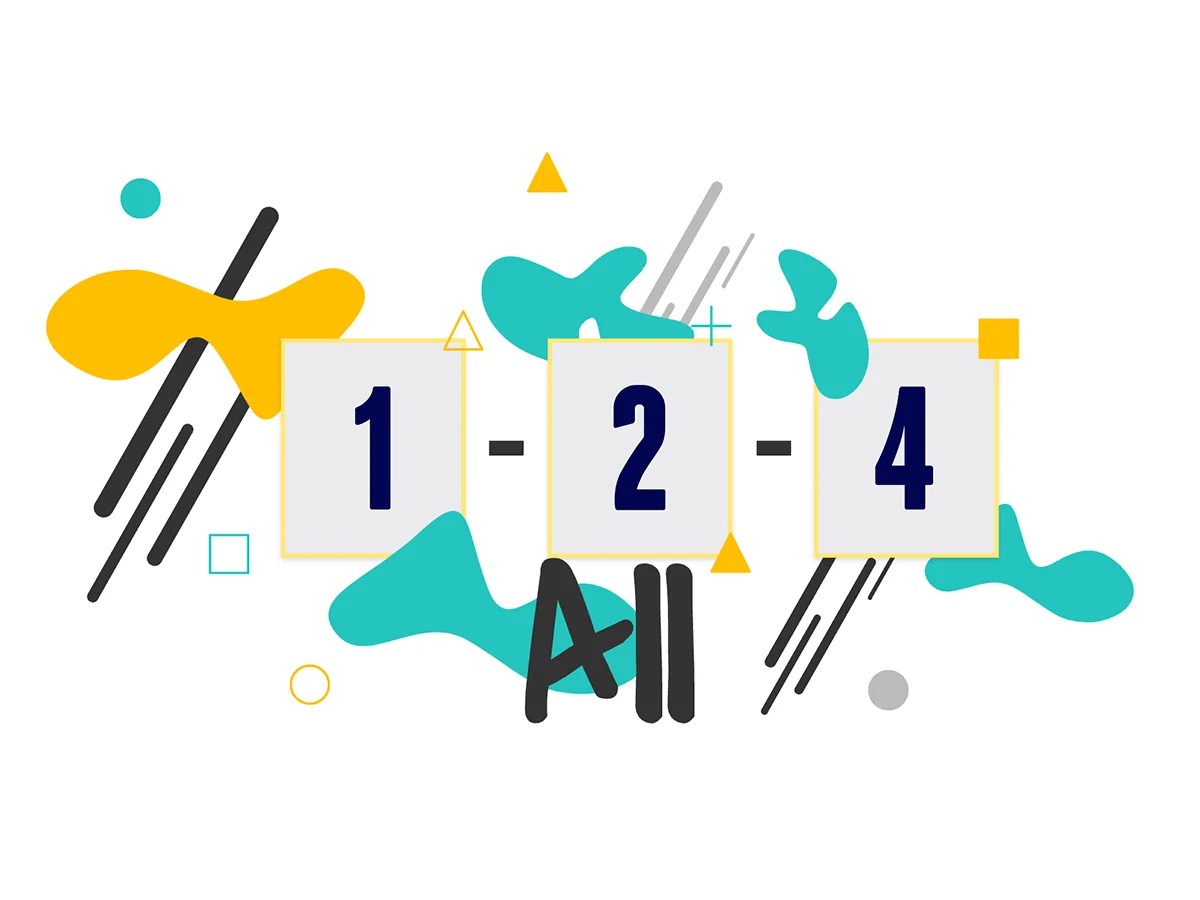5 brainstorming techniques for efficient problem-solving
Executive summary:
There are plenty of advantages that come with efficient problem-solving, such as quicker decision-making, overcoming obstacles, gaining a competitive edge, and generating business growth. So, it’s pretty clear that problem-solving is crucial for businesses, and effective brainstorming techniques are vital when it comes to achieving it.
Brainstorming is a method used by individuals or groups to generate innovative ideas or solutions for a specific issue. It encourages free thinking and unrestricted sharing of thoughts, promoting a creative and collaborative atmosphere. Yet, at the end of the day, brainstorming is only part of problem-solving; they aren’t the same thing and here are three reasons why:
- Brainstorm focuses on generating ideas, while problem-solving involves analyzing andimplementing solutions.
- Brainstorming is informal and spontaneous, encouraging creativity and diverse opinions, whereas problem-solving follows a systematic and structured method whereby the outcome is a solution.
- Brainstorming produces multiple ideas, while problem-solving simply seeks one practical and effective solution.
So, as you’re probably realizing, brainstorming is only the starting point for problem-solving. During brainstorming sessions, a wide range of ideas and perspectives are generated. These ideas are then evaluated and selected during the problem-solving phase of the process. By incorporating diverse ideas, problem-solving becomes more innovative and creative, leading to more effective solutions.
To help you reach your goals for efficient problem-solving, here are five examples of brainstorming techniques that you can implement in your company:
- Team Relay: small groups share and build on ideas to foster creativity and initiate new projects.
- Reverse Brainstorming: generating ideas that exacerbate the problem to find unconventional, out-of-the-box solutions.
- Focus Group: small group discussions to generate suggestions and ideas for problem-solving.
- Crazy-8: fast-paced brainstorming technique to generate ideas within 8 minutes.
- 1-2-4-All: individual and group idea generation to facilitate teamwork and quick idea generation.

Discover the 5 key team collaboration trends that will transform your organization’s engagement and effectiveness in 2025.

If you run a business, you should know one thing.
You’re inevitably going to be faced with challenges.
While no one likes to talk about when things go wrong, there’s no denying that it happens pretty regularly in the world of business. There are always going to be problems and challenges to overcome. But instead of becoming sitting ducks for these challenges, you’ll gain the upper hand if you know how to solve these problems… and how to solve them fast!
Quick problem-solving has many advantages, including quick decision-making, overcoming obstacles, a competitive edge over others, business success/growth, among many more.
That said, all the benefits look great, but there’s one underlying question: how can you solve your company’s problems fast? The answer lies in the concept of efficient brainstorming techniques.
In this article, you’ll find a step-by-step guide, telling you all you need to know about brainstorming to make problem-solving decisions more efficiently, boosting your company's success and promoting efficient teamwork.
Key concepts
What is problem-solving?
Problem-solving is a process that seeks to find solutions to problems or challenges. It includes a series of steps:
- Examining the problem
- Identifying potential solutions
- Assessing them
- And then choosing the optimal solution
But most importantly, you should know that problem-solving follows a structured methodology. It combines critical thinking, creativity, and decision-making abilities, all to reach the goal of a straightforward solution to problems.
Now that that’s sorted, let’s talk about brainstorming.
What is brainstorming?
Brainstorming is a method used by individuals or groups to generate multiple inventive ideas or solutions for a particular issue or subject. The whole concept is based on a cooperative effort and an approach that prompts you and your team members to think freely, articulating any thoughts you have without restriction.
This process aims to build a creative and encouraging atmosphere, where everyone within your company can expand each another's ideas to collaboratively come to creative solutions.
It takes the pressure to come up with one ultimate solution, and shares it out between everyone on the team – as they say, “a problem shared is a problem halved” and the same notion applies here!
You can skip the next section if you’re already confident in differentiating between the two concepts of brainstorming and problem-solving. However, plenty of people tend to mix the two up given their similarities. So, the next section focuses on the differences between them.
What are the differences between problem-solving and brainstorming?
There are three key differences between problem-solving and brainstorming, but that doesn’t mean that you can’t use them in close connection. After this section, we’ll cover how the two concepts work hand-in-hand, but in order to combine them successfully, you also need to understand each of them individually.
The first difference is the focus or the objective. Aside from the fact that brainstorming is simply an initial stage within the problem-solving process, it also has a different objective. The goal of brainstorming techniques is to simply generate ideas. In this phase, there’s no evaluation of their feasibility or efficiency - the goal is simply to come up with as many ideas as possible for solving the problem in question.
Conversely, problem-solving is a more complex process. It entails the analysis of the problem, the evaluation of potential solutions, and the selection of the most suitable way to implement it. It revolves around identifying the best solution from the numerous ideas generated through the brainstorming process. The goal of problem-solving is not to generate ideas, but rather to find the ones that will solve the problem.
Another difference between the two can be found in the approach by which the process is conducted. Brainstorming adopts a more informal approach as participants are encouraged to think freely, to share ideas spontaneously, and to build on each other's suggestions. Of course, there is a need for structure, but there are no boundaries for efficient teamwork.
Then, we have the difference in the emphasis on encouraging creativity and a range of opinions, which isn’t so much the case in problem-solving. The problem-solving process adheres to a systematic and structured methodology, including problem identification, analysis, solution evaluation, and implementation. It relies on an established structure that can guarantee a solution.
The last of the three differences lies in the result — or the outcome, as we often refer to it. Brainstorming sessions produce so many ideas, as they aim to drum up as many options through different creative thinking approaches that can then be further explored. For problem-solving, you’re only looking for one practical and effective solution to the problem.
The success of a problem-solving process doesn’t just depend on how many ideas you can come up with, but rather depends on whether the identified solution is able to adequately address the issue and achieve the desired results.
If you’ve kept up this far, you’ve probably started to realize that the two can work hand-in-hand.
How can brainstorming and problem-solving be complementary for efficient teamwork?
You already know that a brainstorming session is the starting point for a problem-solving process, but that’s not all that there is to it.
You and your team members can generate various ideas, approaches, and perspectives during the brainstorming phase. This uninhibited flow of ideas helps expand everyone’s thinking and thought processes, and to explore multiple potential solutions.
Once the brainstorming phase is complete, you can transition into problem-solving mode. This is when you and your team can evaluate the ideas generated during brainstorming and select the most promising ones for further analysis and development. This evaluation ensures that the chosen ideas align with the problem at hand and are more likely to succeed.
By incorporating the diverse ideas generated during brainstorming, problem-solving becomes more creative and innovative. You and your team can explore unconventional approaches and perspectives that may only have been briefly considered during the brainstorming phase. The result? More effective and efficient solutions.

Learn to easily spot 6 pitfalls to avoid to improve the results of your brainstorming sessions.

How can brainstorming help in problem-solving in teams of any size?
You might be thinking, ‘Haven’t we already gone over this?’, but the answer is, not really!
While we have explored the correlation between brainstorming and problem-solving, this section will look into the benefits of brainstorming and which ways it can be the best starting point to guarantee optimally efficient problem-solving process. Here are a few reasons as to why brainstorming is the ultimate solution for efficient problem-solving in your business.
A range of perspectives leading to a broader range of solutions
Brainstorming involves collecting input and ideas from different team members. So, the larger the team, the more diverse perspectives and experiences are likely to be offered up. This diversity can lead to a broader range of ideas and solutions as individuals approach problems from various angles.
Higher chance of unique ideas
Brainstorming encourages free thinking and is conducive to creativity. Purely down to numbers, larger teams have a higher chance of generating unique and innovative ideas. Team members' collective intelligence and creativity can result in unexpected, breakthrough solutions.
Collective intelligence and synergy
Brainstorming facilitates collaboration and encourages active participation from team members. When people come together to generate ideas, they can build on each other's suggestions, expand upon initial concepts, and create synergistic solutions. The whole team can benefit from the collective intelligence and creativity of everyone involved.
Brainstorming facilitates problem-understanding
In a larger team, different individuals bring diverse expertise and knowledge to the table, and brainstorming allows team members to share their insights and understanding of the problem, enabling a more comprehensive analysis. This broader perspective can lead to a deeper understanding of the problem and help uncover underlying factors that may have been previously overlooked.
Increased solution pool
With a larger team, there is a higher likelihood of generating a larger pool of potential solutions. Brainstorming enables the team to explore a wide range of ideas, even if some may initially seem unconventional or unlikely. A larger solution pool enhances the chances of finding an optimal and effective solution.
Increased motivation to find a solution through team accountability
When team members are actively involved in brainstorming sessions, they feel a sense of accountability and engagement to the problem-solving mission. In larger teams, more individuals have the opportunity to contribute and to be heard, leading to higher engagement levels and boosting motivation to find a solution.
Higher chances of making a decision
Brainstorming also helps in narrowing down the options and selecting the most viable solutions. Larger teams can leverage their collective wisdom and diverse perspectives to evaluate and prioritize the ideas generated during brainstorming. This collaborative decision-making process increases the likelihood of selecting the best solution for the problem.
5 brainstorming methods that can help for efficient problem-solving – and how they do it
Team Relay
Team Relay involves working together in small groups to share ideas. It’s just like a relay race; instead of passing on the baton, you pass and build on ideas. Everyone takes turns to put their two cents in, and the ideas continue to evolve within the group. This helps you to work with your team members and come up with lots of creative ideas.
Team Relay is best for teams of about 12 participants, and this method helps you find new ideas by bouncing off what the team says. You can identify and initiate new projects by working as a cohesive team, capitalizing on every idea collectively and elevating your thinking power to new heights. If you want to kick things off with the Team Relay method, the Klaxoon visual platform has a readymade template for this brainstorming technique that you can use.
Reverse Brainstorming
Reverse brainstorming is a technique where, instead of generating ideas to solve a problem, you focus on creating ideas that will make the problem worse or that will cause the problem. In other words, you’ll turn the problem upside down to define the worst-case scenario. So, how does this help solve the problem?
This excellent brainstorming tool can be used with your team at the start of a project or when you're stuck at a crossroads with a problem. It helps you think outside the box and unleash your imagination. Then, just like magic, the solutions will start to appear on their own! Give this tool a go, and try this template.
Focus group
A focus group is a small group of people (about 6 to 12 participants) who have been selected to meet up and talk or share ideas about a specific problem (strategic development, marketing positioning, etc.).
This selected team works together to generate thoughts and suggestions to help solve the problem or develop new ideas. You can either conduct a qualitative survey on a concept, product, or service, or you can ask the participants to fill in this ready-to-use template.
Crazy 8
Crazy 8 is a pretty fast-paced, dynamic technique, so we’ll try to keep up the pace and explain it concisely.
This is a unique strategy that allows you to brainstorm with your team with a key element… speed! While some brainstorming techniques could simply waste time and drum up an excessive volume of sub-par or irrelevant ideas, this method is all about eyes on the prize, full steam ahead.
With the Crazy 8 methodology, you can generate new ideas as a team in less than 8 minutes! If you want to know more about this unique technique, head over to the this Klaxoon template.
1-2-4-All
As the last of the five, we are introducing you to a concept that has proven to be very effective. The 1-2-4-All method is like regular brainstorming but in several steps:
- First, everyone thinks on their own;
- Then, they share their ideas in bigger groups (in pairs, then in groups of 4, and then with everyone).
The goal is to help your team come up with ideas together. With this method, everyone can first think independently, no matter how many people are in the group. Other people can't influence their ideas or make them doubt themselves, and in this uninhibited way, the ideas pile up quickly.
It makes it easier for both you, as the leader, and your team members, to contribute their ideas and progressively confirm their objectivity through the groups’ input. It's a relaxed and pressure-free way to get everyone involved.
Try ready-to-use brainstorming tools and resources
On the Klaxoon visual platform, we have tools that you can use with your team to lead more effective brainstorming sessions. We also provide ready-to-use templates for brainstorming that can be used in different ways for quick problem-solving.
Our visual tools are designed to promote efficient teamwork and collaboration, no matter what kind of business you have. So, if you want to boost your business, hone your problem-solving strategy, and refine your brainstorming techniques, check out our resources and see how the Klaxoon platform can help you.
Unlock your teamwork potential
For free, make your first steps to top-tier work efficiency with the Klaxoon Work Collaboration Platform.
